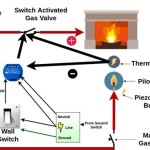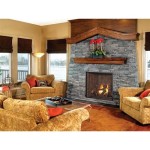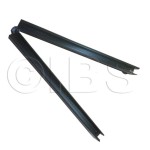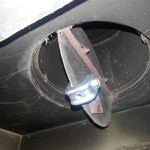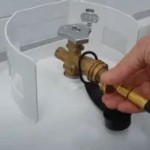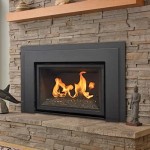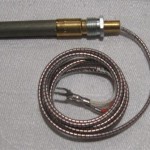How to Install a Natural Gas Fireplace: A Comprehensive Guide
Installing a natural gas fireplace is a significant home improvement project that offers both aesthetic appeal and functional heating. However, it is crucial to approach this endeavor with meticulous planning and adherence to safety protocols. This article provides a detailed guide on the installation process, emphasizing safety measures, code compliance, and the necessary steps to ensure a successful and efficient outcome. It is strongly recommended that a qualified and licensed professional handle the gas line connections and ensure proper venting, especially if unfamiliar with gas appliance installation.
Prior to commencing any work, a thorough assessment of the existing structure and the desired fireplace location is essential. This involves evaluating the structural integrity of the wall or area where the fireplace will be installed, confirming adequate clearance from combustible materials, and determining the feasibility of venting options. Check local building codes and regulations regarding gas fireplace installations, including permits required and specific requirements for venting and gas line connections. Failure to comply with these codes can result in fines and necessitate costly rework.
Furthermore, it is important to select a natural gas fireplace that aligns with the heating needs of the space and complements the overall design of the room. Consider factors such as the BTU output, venting requirements, and the type of ignition system (e.g., standing pilot, electronic ignition). Natural gas fireplaces come in various styles, including direct-vent, vent-free, and B-vent models, each with its own installation considerations and limitations.
Key Point 1: Preparing the Installation Site
The initial stage of the installation process involves preparing the designated area for the fireplace. This includes removing any existing structures or obstructions, such as drywall, paneling, or framing, that interfere with the fireplace's footprint. Ensure the area is clean and free of debris. If installing a built-in fireplace, constructing a framing enclosure to house the unit is usually required. This framework should be built according to the fireplace manufacturer's specifications, ensuring proper support and adequate clearance for ventilation.
The framing material should be fire-resistant or treated with a fire retardant, particularly in areas close to the firebox. Accurate measurements are crucial to ensure the fireplace fits snugly within the enclosure. Consult the manufacturer's installation manual for precise dimensions and framing guidelines. The manual often includes diagrams and instructions for creating the appropriate framing structure.
Another critical aspect of site preparation is planning for the gas line connection and venting system. The gas line connection should be located within the fireplace enclosure or easily accessible nearby. The venting system's route, whether it be direct-vent, B-vent, or vent-free, needs to be meticulously planned to ensure proper exhaust of combustion byproducts. Direct-vent systems typically require a penetration through an exterior wall, while B-vent systems utilize an existing chimney or require installation of a dedicated vent pipe that extends to the roof. Vent-free models, while not requiring external venting, are subject to strict regulations and potential limitations in certain jurisdictions.
Wiring considerations are also important. Most natural gas fireplaces require an electrical connection for the ignition system, blower fan (if included), and control panel. A dedicated electrical circuit is recommended to prevent overload and ensure consistent power supply. The electrical outlet should be located within the framing enclosure or in close proximity, adhering to electrical codes and safety regulations.
Key Point 2: Gas Line Connection and Safety Measures
The gas line connection is arguably the most critical aspect of the installation process and should only be performed by a qualified and licensed gas fitter. Improper gas line connections can lead to gas leaks, explosions, and carbon monoxide poisoning. Prior to commencing any work on the gas line, ensure the main gas supply to the house is shut off at the meter. This is a fundamental safety precaution that minimizes the risk of gas leaks during the connection process.
The gas line to the fireplace should be sized appropriately based on the fireplace's BTU requirements. Consult the fireplace manufacturer's specifications to determine the correct pipe size. Use only approved gas piping materials, such as black iron or flexible gas connectors specifically designed for gas appliance installations. Apply thread sealant specifically formulated for gas lines to all threaded connections to ensure a leak-proof seal.
After completing the gas line connection, a leak test is mandatory. This can be performed using a gas leak detection solution applied to all joints and connections. Look for bubbles, which indicate a gas leak. If a leak is detected, immediately shut off the gas supply and tighten the connection or replace the fitting. Repeat the leak test until no leaks are detected. In some jurisdictions, a licensed gas fitter is required to pressure test the entire gas line system after the installation is complete.
Install a gas shut-off valve upstream of the fireplace's gas connection. This valve allows for easy shut-off of the gas supply in case of emergencies or for maintenance purposes. The shut-off valve should be readily accessible and clearly labeled. Consider installing a carbon monoxide detector near the fireplace to provide an additional layer of safety. Regularly test the carbon monoxide detector to ensure it is functioning correctly.
Key Point 3: Venting System Installation
The venting system is crucial for safely exhausting combustion byproducts from the fireplace. The type of venting system required depends on the type of fireplace (direct-vent, B-vent, or vent-free) and local building codes. Direct-vent fireplaces utilize a sealed combustion system, drawing air from outside and exhausting combustion gases directly outside through a coaxial or dual-pipe vent system. B-vent fireplaces rely on natural draft to exhaust combustion gases through a vertical vent pipe that extends to the roof. Vent-free fireplaces do not require external venting, but they must meet strict safety standards and are subject to limitations in some areas.
When installing a direct-vent system, ensure the vent pipe is properly sealed and sloped to prevent condensation from collecting within the vent. Follow the manufacturer's instructions for vent pipe sizing, length, and termination height. The vent termination should be located away from windows, doors, and air intakes to prevent combustion gases from re-entering the building. The venting system must maintain proper clearances from combustible materials as specified by the manufacturer.
For B-vent systems, ensure the vent pipe is properly connected to the fireplace and extends vertically to the roof. The vent pipe should be supported at regular intervals to prevent sagging and maintain proper alignment. The vent termination should be equipped with a vent cap to prevent rain, snow, and debris from entering the vent. The vent cap should also be designed to prevent backdrafting.
After installing the venting system, visually inspect all connections and joints to ensure they are properly sealed and secured. Test the venting system by temporarily operating the fireplace and observing the exhaust flow. Ensure that combustion gases are being properly exhausted and that there are no signs of backdrafting or leakage. Consult the fireplace manufacturer's instructions for specific testing procedures. If uncertain about any aspect of the venting system installation, consult with a qualified HVAC technician or a licensed gas fitter before proceeding.
Once the fireplace is positioned and connected to the gas line, ensuring the unit is level and securely fastened to the framing is paramount. Follow the manufacturer's instructions for securing the fireplace to the framing structure. Use appropriate fasteners and ensure the fireplace is stable and cannot be easily moved or dislodged.
With the fireplace secured, it is time to connect the electrical wiring. Consult a qualified electrician if unfamiliar with electrical wiring. Connect the wiring according to the manufacturer's provided wiring diagram. Ensure all connections are secure and properly insulated. Test the electrical components, such as the ignition system and blower fan, to verify they are functioning correctly.
After successful gas line, venting system, and electrical connections, the fireplace surround can be installed. This typically involves installing decorative panels, mantels, or stone/brick finishes around the fireplace. Follow the manufacturer's instructions for installing the surround, ensuring proper clearances from the firebox and venting components. Use fire-resistant materials for the surround, particularly in areas close to the firebox.
Finally, conduct a comprehensive final inspection of the entire installation. Verify that all connections are secure, all clearances are maintained, and all safety devices are functioning correctly. Operate the fireplace for an extended period to monitor its performance and identify any potential issues. Ensure that the flame is burning properly and that the venting system is effectively exhausting combustion gases.
Keep the manufacturer's instructions and warranty information readily accessible for future reference. Schedule regular maintenance and inspections of the fireplace to ensure it continues to operate safely and efficiently. A qualified technician can inspect the gas line, venting system, and electrical components to identify any potential problems before they become serious.

How To Select And Install A Gas Fireplace Log Set Fireplaces Direct Learning Center

How To Install A Gas Fireplace Diy Built In

How To Install A Gas Fireplace Diy Built In

How To Install A Ventless Natural Gas Fireplace

How To Install The Boulevard Vent Free Fireplace

If You Have A Gas Fireplace It May Or Not Chimney Flue

How To Install A Fireplace Homeserve Usa

How To Select And Install A Gas Fireplace Log Set Fireplaces Direct Learning Center

How To Install A Gas Fireplace Diy Built In

Fireplace Installations Near Dc Chimney Experts
Related Posts

